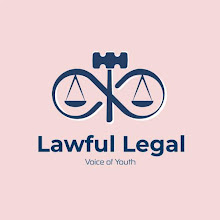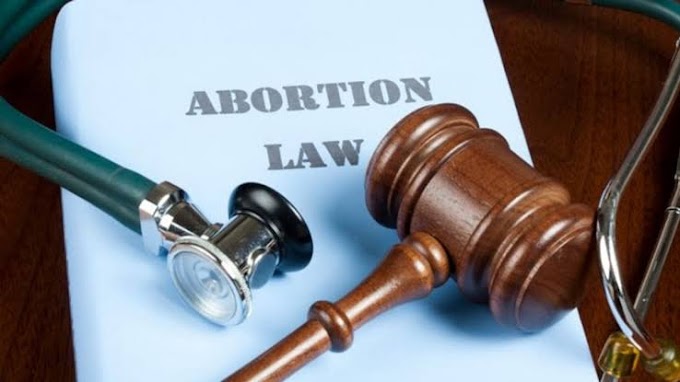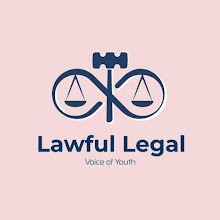Navigating the legal landscape: LGBTQ+ rights and challenges in India
Author : Suhavi Kaur, a Student of University Institute for legal studies (UILS)
"I am what I am, so take me as I am" – Johann Wolfgang von Goethe.
Shakespeare, through one of his characters in a play, famously uttered, "What's in a name? If we call a rose by any other name, it would still smell the same." This phrase underscores the significance of an entity's essential qualities and fundamental characteristics over the name by which it is identified. Similarly, individuals should not be distinguished, discriminated against, or denied basic human rights solely on the basis of their sexual preferences.
Homosexuality is not a recent or foreign phenomenon within the cultural landscape of India; its roots run deep in history. Ancient texts such as the Rig Veda, dating back to approximately 1500 BC, and various sculptures depict same-sex relationships as manifestations of a world where sexuality was celebrated for its capacity to bring pleasure and fertility. References to homosexual acts in the Kamasutra, the existence of young male harems under the rule of Muslim Nawabs and Hindu Aristocrats, as well as instances of male homosexuality in Medieval Muslim history, such as that of Malik Kafur, all provide historical evidence of same-sex relationships throughout Indian civilization.
However, the landscape surrounding LGBTQ+ rights in India has not been without its challenges. On February 23, 2012, the Ministry of Home Affairs expressed its opposition to the decriminalization of homosexual activity, contending that it is regarded as immoral within the country.
While there have been notable strides in recent years regarding the rights of the Lesbian, Gay, Bisexual, Transgender, and Queer (LGBTQ) community in India, these citizens still encounter a complex interplay of social and legal challenges that include:
1. Bullying and Discrimination in Educational Institutions: According to a 2018 UNESCO report, LGBTQ children often endure bullying and discrimination in schools and colleges, leaving lasting emotional scars (UNESCO Report, 2018).
2. Violence and Corrective Measures in Some Rural Areas: In some rural parts of India, secret honor killings are carried out, and lesbian women are subjected to family-sanctioned corrective rapes, often perpetrated by their own relatives (Mint, 2021). This inhumane practice also extends to forcing LGBTQ individuals into so-called corrective therapy, treating their sexual orientation as a malady in need of a cure.
3. Urban Familial Pressures: The non-acceptance of LGBTQ individuals is not confined to rural areas; urban families, too, grapple with societal status concerns, often overshadowing their responsibilities toward their LGBTQ children.
4. Mental Health Vulnerabilities: Persistent societal pressures contribute to heightened mental health vulnerabilities within the LGBTQ community. The National Institute of Mental Health and Neurosciences (NIMHANS) reported an increased prevalence of anxiety and depression among LGBTQ individuals.
5. Limited Access to Education and Employment Opportunities: Discrimination frequently hampers LGBTQ individuals' access to quality education and suitable employment opportunities, as highlighted in the India Exclusion Report 2021.
In recent times, there have been notable legal advancements concerning the rights of the LGBTQ community in India:
1. Repeal of Section 377 of IPC, 1860: In the landmark case of Navtej Singh Johar v. Union of India (AIR 2018 SC 4321), led by the Constitutional Bench with then-CJI Justice Dipak Mishra, the Supreme Court partially decriminalized Section 377 of the Indian Penal Code, 1860, which previously criminalized homosexual relations. This decision marked a crucial step toward LGBTQ community equality and normalization, while safeguarding their fundamental rights.
2. The 2019 Transgender Persons (Protection of Rights) Act: Transgender persons were historically acknowledged in Indian mythology but faced violence and prejudice during the British era, contributing to their marginalization. The Supreme Court recognized them as the third gender in the case of National Legal Services Authority v. Union of India (AIR 2014 SC 1863), a significant milestone. Efforts to protect their rights began with the introduction of the first-ever bill in 2014, which unfortunately lapsed in 2016.
3. Reservations for Transgender People: Following the Supreme Court's declaration in the case of National Legal Services Authority v. Union of India (AIR 2014 SC 1863) that transgender people belong to the third gender, they are now eligible for reservations as per India's quota policies. The Indian Constitution guarantees economic and educational accommodations for transgender individuals.
Here are several recommendations to mitigate discrimination against LGBTQ individuals:
1. Inclusion in Education: Incorporating LGBTQ-related curriculum into schools is crucial for raising awareness and combating prejudice. It is essential to educate not only the younger generation but also the middle-aged population, creating an environment where LGBTQ youth can safely disclose their identities to their families.
2. Creating Supportive Environments: The LGBTQ community benefits from safe spaces and platforms for open discussions and support. Initiatives such as Pride Parades and LGBTQ-focused social networks and apps contribute to a more inclusive culture.
3. Combatting Bullying: Establishing anti-bullying measures in educational institutions, including strict enforcement of rules, can create a conducive environment for LGBTQ students to receive quality education.
4. Governmental Programs: The government should implement programs aimed at facilitating employment opportunities and addressing discrimination against LGBTQ individuals, particularly in rural areas.
5. Mental Health Support: Free counselling and therapy services should be made available to LGBTQ individuals to address the psychological stress associated with societal discrimination.
6. Training for Healthcare Professionals: Healthcare staff should receive proper training on treating transgender individuals, ensuring respectful and inclusive care.
7. Transparent Identity Document Processes: Simplifying the process of obtaining identity documents for transgender individuals, including "transgender" as a gender option on forms, can promote inclusivity.
In conclusion, despite significant legal advancements, LGBTQ individuals in India continue to grapple with societal acceptance. It is imperative to recognize that while a Supreme Court judgment can initiate legal changes, societal transformation and the eradication of discrimination against LGBTQ individuals remain collective responsibilities. The decriminalization of same-sex acts is just one step towards placing LGBTQ individuals on equal footing with the rest of society. The future holds key issues such as same-sex marriage, adoption rights, protection against discrimination, and other crucial matters that require continued advocacy and activism. The journey toward full inclusion in India is an ongoing one, with numerous challenges yet to be overcome in order to transform the nation into a truly inclusive society.
Supporting the LGBTQ community is an act of compassion that touches the very essence of humanity. It's about recognizing the inherent beauty in the diversity of love and identities. Every person deserves the chance to embrace their true self without fear or prejudice. By standing with the LGBTQ community, we are not just advocating for equal rights; we are affirming the worth and dignity of every individual. Let us strive together to build a world where every heart can love freely and every soul can find acceptance in the warm embrace of humanity's collective love and understanding.




![Freedom of Speech in India [Indian Supreme court and Law of Sedition]](https://blogger.googleusercontent.com/img/a/AVvXsEiGLLUmLKq5Da6xDZplasOZHKRj-jOhWPkoeuy0_Eq757tUpOiHz-xooXwIlAjF0-hmBfi-TtMIv6on_sVgBXVq4wbWwnbsqLOcNX22S8C2aSq-ZuK3vn9wWAx8tXByYOBfwc0hs6b8RJV84YNFG2greouGKjup6g8kN-xVlchW33VHdSSmrhLC1BUEVbGp=w680)





